An uncommon chert sample with Rhynia
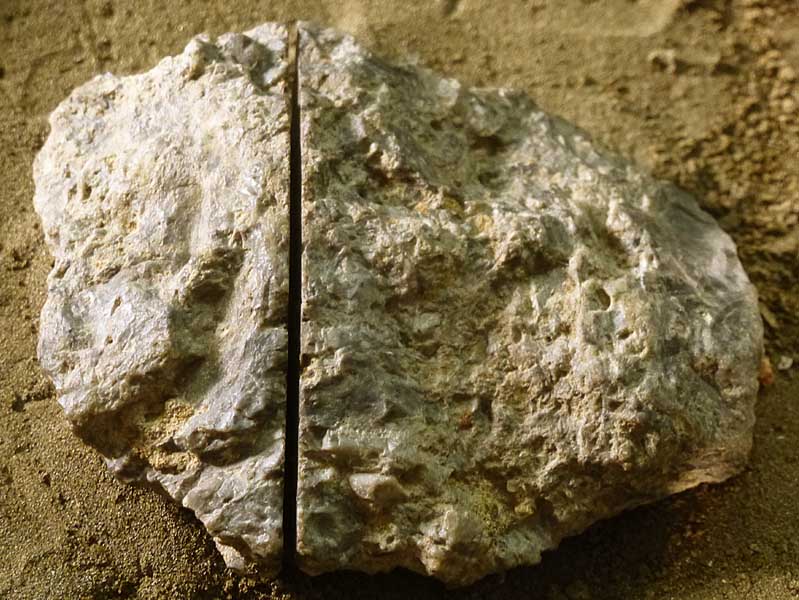
Fossiliferous chert samples are usually found as
fragments
of chert layers with
crack faces from brittle fracture on their surface, which often reveal
part of the fossil content by inspection from outside. The quite
uncommon small sample of Rhynie chert in Fig.1, without the
large fracture
faces often seen on chert samples, must have been torn off at
an early stage while the
hardening stratum was still gel-like, with plant parts already more
solid, now partially sticking out (Fig.2) and making a bumpy
surface.
Some small brittle cracks had been formed later after the silica gel
had turned into hard chalcedony (Fig.3).
Fig.1: Uncommon sample of Rhynie chert: rugged
boundary and bumpy surface with abundant broken Rhynia;
remains of sandstone in pockets. Width of the picture 7.5cm.
Fig.2 (below):
Detail from the bumpy surface: Rhynia
with
epidermis, broken off. Width
of the picture 5mm.
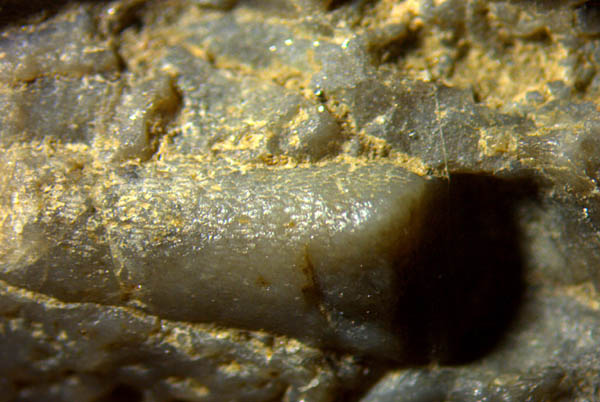
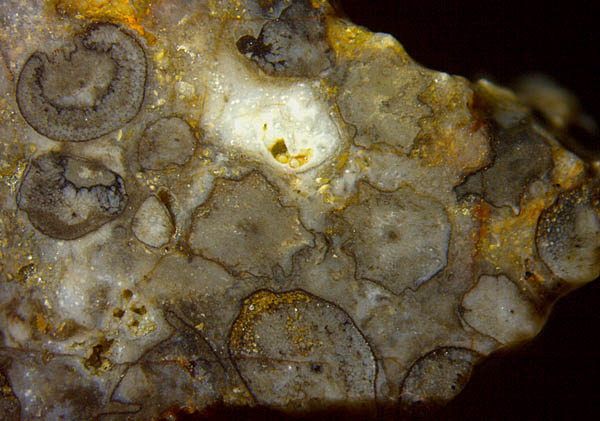
Fig.3 (right): Rhynia
in various stages of deformation and damage; small-scale brittle
fracture below.
Width of the picture 8mm.
Fig.4 (below left, detail of Fig.3): Rhynia, enigmatic
type of damage.
Width of the picture 2.5mm.
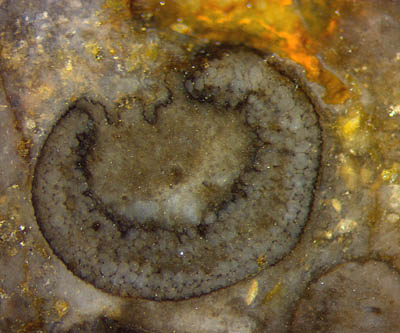
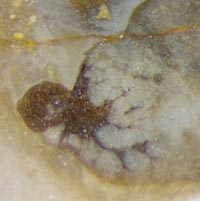
Fig.5 (left, detail of Fig.3): Rhynia,
deformed, with enigmatic
organism inside and outside.
Width of the picture 1mm.
See also Rhynie
Chert News 165.
Samples without the
typical aspect of fossiliferous chert,
without larger fracture
faces and with a bumpy
surface, may be easily overlooked.
Like any other Rhynie chert sample they are worth being inspected
since they might reveal a surprise, as the one in
Fig.5.
Sample:
Rh22/4 (70g), found at Castlehill near Rhynie in 2009.
H.-J.
Weiss 2020
 |
 |
164 |








